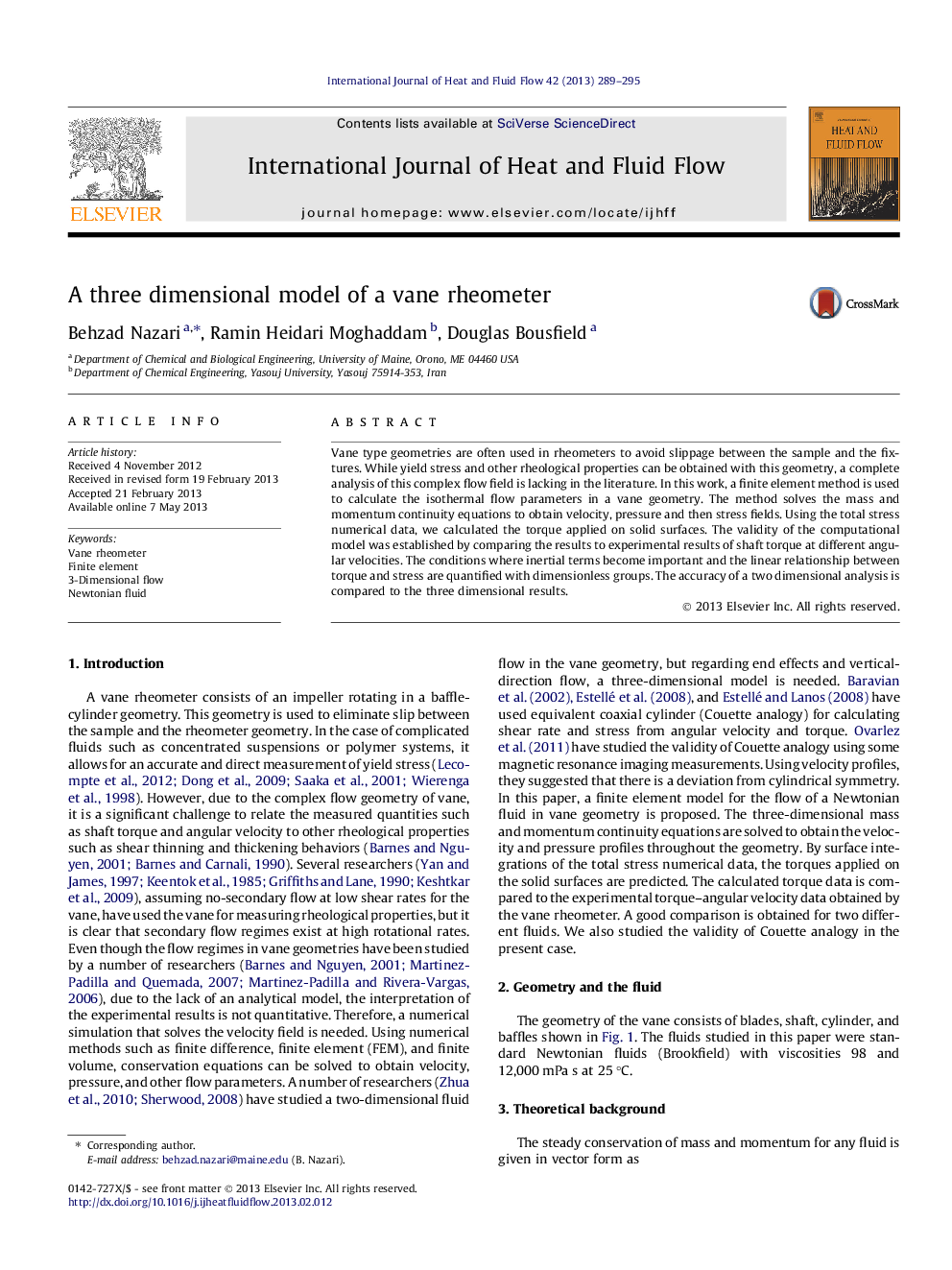| Article ID | Journal | Published Year | Pages | File Type |
|---|---|---|---|---|
| 655613 | International Journal of Heat and Fluid Flow | 2013 | 7 Pages |
•FEM was used to calculate the isothermal flow parameters in a vane geometry.•Velocity, pressure and then stress fields were obtained.•Using total stress, shaft torque was calculated to compare with experimental data.•A modified cell Reynolds number and power number were used to study flow pattern.•A comparison between 2D and 3D modeling was done based on calculated torques.
Vane type geometries are often used in rheometers to avoid slippage between the sample and the fixtures. While yield stress and other rheological properties can be obtained with this geometry, a complete analysis of this complex flow field is lacking in the literature. In this work, a finite element method is used to calculate the isothermal flow parameters in a vane geometry. The method solves the mass and momentum continuity equations to obtain velocity, pressure and then stress fields. Using the total stress numerical data, we calculated the torque applied on solid surfaces. The validity of the computational model was established by comparing the results to experimental results of shaft torque at different angular velocities. The conditions where inertial terms become important and the linear relationship between torque and stress are quantified with dimensionless groups. The accuracy of a two dimensional analysis is compared to the three dimensional results.
